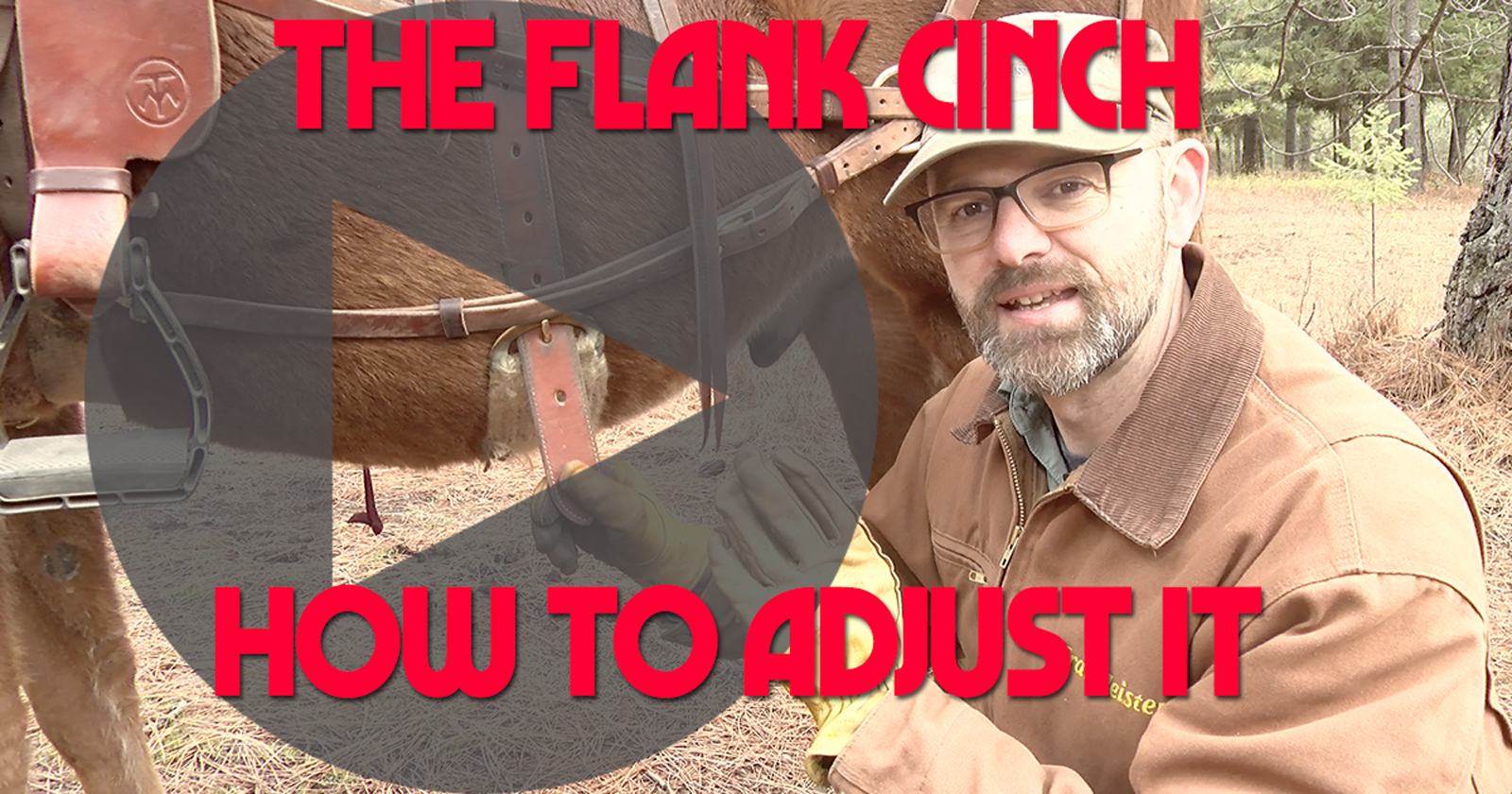Learn How to Use a Flank Cinch
A double rigged saddle without a functional back cinch is like a suitcase with only one latch buckled.
Hello, we got an email asking about flank cinches. So let’s check out the humble flank cinch.
The rear, or flank, cinch is more than a pretty accessory for a Western saddle.
It’s a safety feature that holds your saddle snug and level to your horse’s barrel and prevents the cantle from tipping forward.
For trail riding, the back cinch is a must. And you’ve got to set it up right!
I see lots of riders with back cinches hanging far below their horses belly and it makes me cringe.
Anything from a hoof to a stick could go through that empty space and be the cause of an “eventful” ride.
I like my rear cinch tighter than just touching. Not as tight of the front perhaps, but quite snug. The cinch is meant to secure the saddle, if it’s loose it’s like wearing shoes with no shoelaces.
For my mules I tend to put the back cinch behind the largest part of their belly to help keep the saddle from sliding forward.
And no, this isn’t a bucking strap. The hobble keeps the cinch from migrating too far back. Indeed if you’re using a flank cinch you’d better have that hobble attached lest you cause a “sporty” event.
So there you go! How to use a flank cinch. It’s what keeps me safe!
I always keep my rear good and snug, the way it should be. I rely on my cinches, breast collar, and breechin to keep my saddle in place, and me safe, in the backcountry.
You’re not doing your horse or mule any favors by skipping the back cinch or leaving it flopping in the wind.
Thanks for watching! If you enjoyed this video please hit the like button and be sure to share it with someone who’ll also find it interesting.


